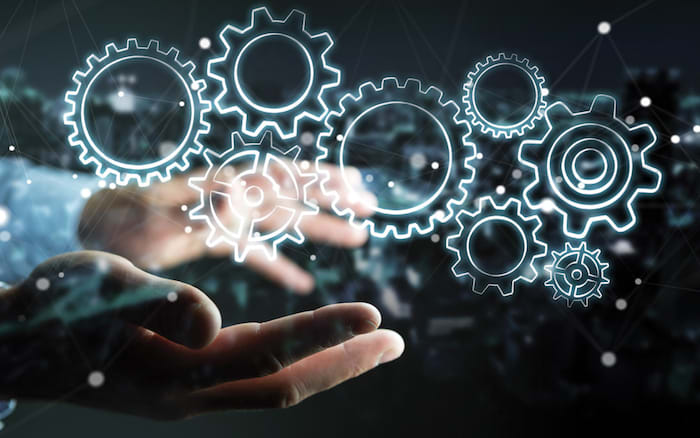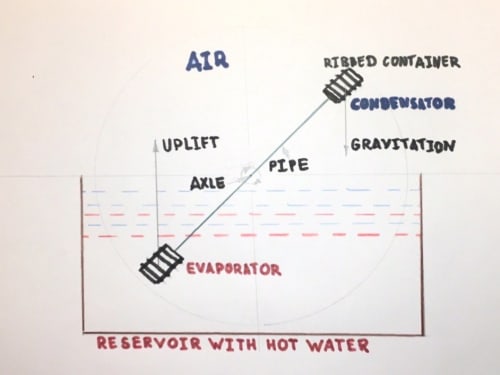Congratulations to Our 2024 Grand Prize and First Place Winners!
NETrolyze, a novel immunotherapy for triple-negative breast cancer (TNBC), was named the $25,000 grand prize winner at a live finalist round held November 15 in New York. The first-in-class therapeutic injectable gel prevents the spread of TNBC, one of the most aggressive cancer types, enabling patients to avoid toxic chemotherapy and expensive treatments – potentially transforming their lives. Click here for the full list of 2024 winners. Also see the Top 100 highest scoring entries.
Help build a better tomorrow
Since Tech Briefs magazine launched the Create the Future Design contest in 2002 to recognize and reward engineering innovation, over 15,000 design ideas have been submitted by engineers, students, and entrepreneurs in more than 100 countries. Join the innovators who dared to dream big by entering your ideas today.
Read About Past Winners’ Success Stories

Special Report spotlights the eight top entries in 2023 as well as past winners whose ideas are now in the market, making a difference in the world.
Click here to read moreA ‘Create the Future’ Winner Featured on ‘Here’s an Idea’
Spinal cord injury affects 17,000 Americans and 700,000 people worldwide each year. A research team at NeuroPair, Inc. won the Grand Prize in the 2023 Create the Future Design Contest for a revolutionary approach to spinal cord repair. In this Here’s an Idea podcast episode, Dr. Johannes Dapprich, NeuroPair’s CEO and founder, discusses their groundbreaking approach that addresses a critical need in the medical field, offering a fast and minimally invasive solution to a long-standing problem.
Listen nowThank you from our Sponsors
“At COMSOL, we are very excited to recognize innovators and their important work this year. We are grateful for the opportunity to support the Create the Future Design Contest, which is an excellent platform for designers to showcase their ideas and products in front of a worldwide audience. Best of luck to all participants!”
— Bernt Nilsson, Senior Vice President of Marketing, COMSOL, Inc.
“From our beginnings, Mouser has supported engineers, innovators and students. We are proud of our longstanding support for the Create the Future Design Contest and the many innovations it has inspired.”
— Kevin Hess, Senior Vice President of Marketing, Mouser Electronics
contest
Contest
The most fuel-consuming phase of flight, in terms of liters per second, is take-off. With the increasing popularity of Unmanned Aerial Vehicles (UAVs) and Unmanned Fighter Jets, the need for longer endurance is a common challenge. Saving fuel during take-off means extending flight time,
Physical touch plays a crucial role in a person’s ability to communicate and perceive the world around them. The United States Government, health care developers,
Problem statement
Intelligent Symptom Tracker: Telehealth Monitoring App addresses the problem of insufficient tracking and understanding of symptoms for various conditions. Many individuals struggle to identify and correlate their symptoms with underlying health issues, leading to mismanagement and increased discomfort.
Liver diseases affect approximately one third of the worldwide adult population, and often remain undiagnosed until reaching severe stages due to the liver's lack of pain sensors. The current gold standard, biopsy, is invasive, expensive, and unsuitable for wide-scale screening.
This proposal would fill a ballistic projectile ie artillery or mortar shell with a liquefied inert gas, and fire it upwind of an isolated wildfire. The projectile would not detonate but would disperse LIG over the hot spot.
In the rapidly evolving aviation landscape, technological advancements are crucial in enhancing operational efficiency, safety, and profitability. Kquika, a pioneer in artificial intelligence (AI) and machine learning (ML) solutions, is at the forefront of this transformation. By leveraging sophisticated algorithms and innovative technologies, Kquika is revolutionizing the aerospace/aviation market,
The project will allow converting low potential thermal energy into mechanical energy and then using mechanical energy to convert it into electric energy. Heat can be obtained from geothermal sources, direct solar heating, wind or any other sources.
While washing dishes by hand, an idea came to mind - how much water and energy (to heat the water) could be saved by taking advantage of the power of modern control systems, machine vision and learning?
The state-of-the-art automated wheelchair is designed to enhance the quality of life for individuals with disabilities by providing both comfort and independence. Equipped with an integrated massager, this wheelchair offers therapeutic relief to users, helping to reduce muscle tension and promote relaxation.
Charging a pacemaker’s battery from a certain distance cannot be achieved by tightly or loosely coupled electromagnetic resonant charging. To overcome the above challenge, we developed a device that charges through an uncoupled radio frequency (RF). Wireless charging method will help patients to avoid surgeries.
Page 19 of 986


















